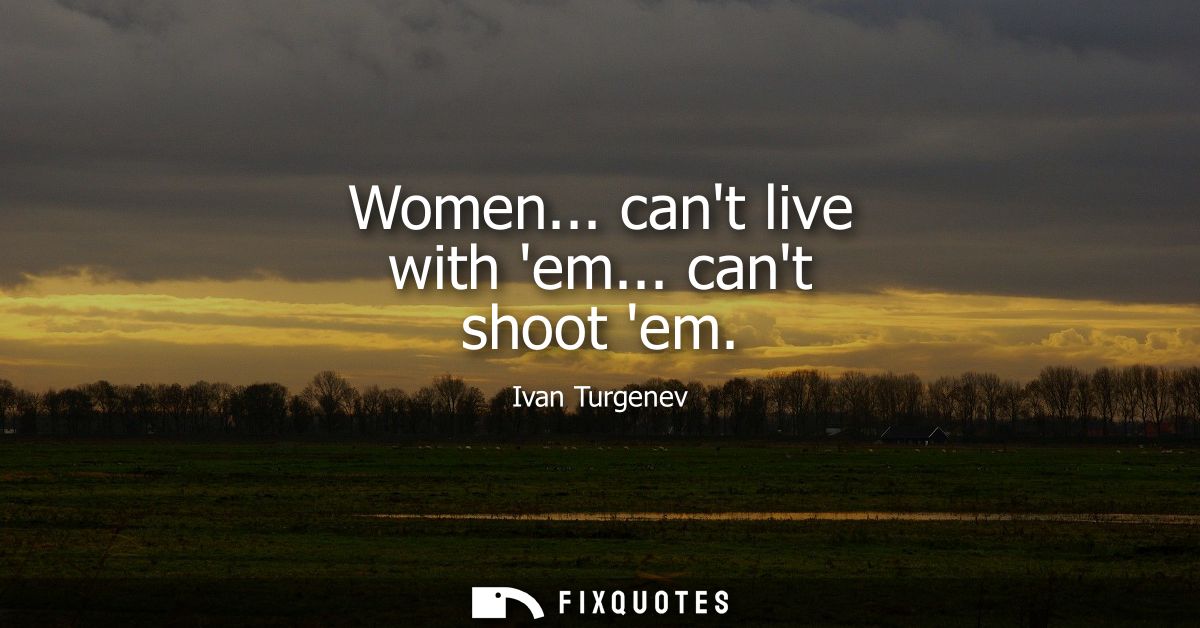"Women... can't live with 'em... can't shoot 'em"
About this Quote
Ivan Turgenev’s oft-cited phrase, "Women... can't live with 'em... can't shoot 'em", stands as a blunt and ironic commentary on the complexities of male-female relationships. With its structure, the expression pivots on a contrast: it gestures to the inevitability of relationships between men and women while simultaneously highlighting the frustrations and perceived incompatibilities that can arise within them. The statement captures a universal tension, an acknowledgment that, despite the challenges and emotional turbulence women may bring to men’s lives (as stereotypically perceived), total separation is neither possible nor desirable.
The first part, "can't live with them", touches upon difficulty, men might feel exasperated by women's behavior or emotionality, yet find themselves incapable of detaching or living a fulfilling life in their absence. The shared human experience, companionship, love, and the foundational role women play in families and societies make absolute separation unthinkable. There is also a tacit recognition of connection and maybe even dependency, whether emotional, social, or practical.
The second part, "can't shoot them", injects a darkly comic hyperbole, exposing the impossibility or impropriety of any violent or radical solution to the perceived frustrations. It serves as both a rhetorical device and a nod to social and moral prohibitions, transforming frustration into an absurdity, no matter how extreme the irritation, drastic actions are neither acceptable nor serious options. The humor, biting as it may be, underlines the need for coexistence, communication, and enduring patience.
Turgenev’s phrasing, laced with irony, captures both the conflicts and the enduring bonds that characterize gender relations. Its ambiguity leaves space for critical reflection: the phrase reveals not only the personal and cultural attitudes of its time but invites readers to question and reconsider underlying assumptions, biases, and the nature of enduring partnerships.
More details
About the Author

